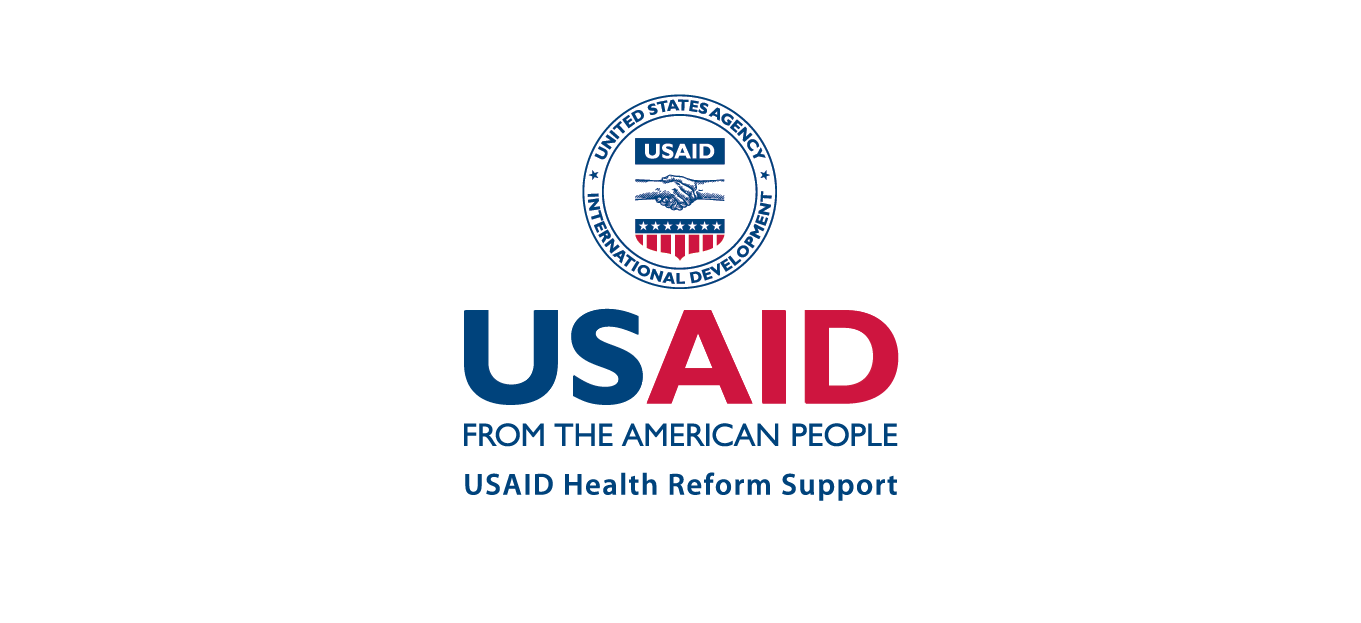Social protection of the population during wartime is a highly challenging task. At the same time, vulnerable segments of the population suffer the most from the consequences of the war. From the very beginning of the full-scale Russian invasion, the Ukrainian government has been able to effectively provide social benefits and ensure the functioning of the social sector. Of course, the war has had particularly severe consequences for the most vulnerable categories of the population, such as people with disabilities and older people. However, the scale of the catastrophe could have been much greater. Fortunately, this was avoided.
The analysis in this article is based on data from the Reform Index, specifically the assessments of reforms implemented from February 2022 to June 2023 in the field of social protection. This includes pension provision, the labor market, unemployment assistance, social benefits for vulnerable populations, and social services. We also looked at regulatory acts not included in Reform Index due to their temporary nature or lesser impact.
Most of the changes in social policy aimed to adapt the state’s social policies to the new realities of war, reevaluate vulnerable population groups, and take into account the significant number of internally displaced persons (IDPs) and refugees. However, there have also been long-awaited vital breakthroughs. For instance, Ukraine is finally implementing the Unified Information System of the Social Sphere (UISSS), which integrates all business processes in the social sphere. This will ensure better control over payments and facilitate citizens’ access to various forms of social support. The UISSS also facilitates information exchange between government bodies such as the Ministry of Social Policy, Pension Fund, Ministry of Justice, Ministry of Digital Transformation of Ukraine, and the State Tax Service to ensure the provision of necessary assistance to citizens. The expansion of digitization in the social sphere makes it easier for people to access it, enabling them to obtain certificates or submit applications for social assistance through their mobile phones. While this currently applies only to specific services, the list is expanding.
Social assistance for the military
From the beginning of the full-scale war, the government introduced new types of social assistance for military personnel. These include additional payments for soldiers, opportunities for treatment and rehabilitation in Ukraine and abroad, and preferential housing loan programs.
Payments. One of the earliest types of payments introduced by the government at the beginning of the full-scale war is the allowances for the AFU’s Special Operations Forces. These allowances apply to all military positions, except for conscripts, and range from 6,200 to 12,400 hryvnias (i.e., 50-100% of five times the subsistence minimum as of January 1, 2022), depending on the military rank held by the personnel.
Starting from February 28, 2022, the government also introduced allowances for military personnel of the Armed Forces of Ukraine, the Security Service, intelligence agencies, the border service, and other departments. Initially, the scheme included two additional payments: up to 100,000 hryvnias per month for military personnel engaged in combat missions and fighting on the front lines, depending on the duration of their involvement in such tasks, and 30,000 hryvnias for other military personnel. In March 2022, the payments were extended to conscripts and military personnel of the State Criminal Executive Service. Subsequently, they were expanded to include service members undergoing treatment, prisoners of war, except those who voluntarily surrendered, and those who died due to injuries.
The first significant change in these allowances occurred on January 25, 2023. The Ministry of Defense approved an order to cancel the fixed payment of UAH 30,000 for military personnel in non-combat positions (including Ministry of Internal Affairs employees, conscripts, cadets, staff officers, etc.) starting from February 1. This payment was retained only for military personnel serving on the frontlines, even if they were not directly involved in combat operations. The combat-related payments of UAH 100,000 remained unchanged for military personnel engaged in combat missions on the frontlines, families of prisoners of war, missing persons, and those who died. The Ministry of Defense explained this change as necessary to optimize the state budget expenditures. However, the government increased the minimum monthly wage for service members, ranging from UAH 17,000 (for the State Emergency Service and police) to UAH 20,100 (for the Armed Forces, National Guard, and State Border Guard Service).
However, the decision to reduce the allowances sparked outrage among a portion of society. As a result, the people’s deputies developed and passed a law with an amendment that allows for the restoration of the military allowances through reductions in salaries for civil servants and management of state-owned enterprises (although even these funds would be insufficient, to provide all military personnel with such payments). This step drew criticism both within the government and from the IMF representation in Ukraine due to the risk of increasing the budget deficit and the need to seek additional sources of financing, including through tax measures and borrowing (which in the previous year experienced delays in disbursement).
The resolution regarding the procedure for additional payments to military personnel also includes a one-time payment of UAH 15 million to the families of fallen defenders of Ukraine. This amount is divided among all eligible family members. In the initial months, the payment was made as a lump sum. However, the current disbursement is divided into parts: the first installment is 20% of the total amount, and the remaining balance is paid in installments over a period of 40 months.
The Cabinet of Ministers has also provided one-time financial assistance to the families of deceased volunteers who assisted the Armed Forces or other security agencies since the beginning of the great war and to volunteers who became disabled due to injuries sustained during their assistance. The payment to families of deceased volunteers amounts to five hundred subsistence minimums for non-disabled individuals, while for volunteers who became disabled, it ranges from 150 to 250 subsistence minimums for non-disabled individuals.
Treatment and rehabilitation. In April of last year, the Cabinet of Ministers approved the procedure for sending injured military personnel and law enforcement officers wounded in combat operations for treatment abroad. According to this procedure, the referral of Ukrainian defenders for treatment abroad is initiated by healthcare institutions if there is confirmation of a specific EU country’s readiness to provide free treatment to the injured individual.
Additionally, the Cabinet of Ministers has approved a state standard rehabilitation plan for individuals with disabilities, the procedure for providing such individuals with rehabilitation aids, as well as regulations on individual rehabilitation plans, their funding, and implementation.
The government has also approved a procedure whereby military personnel, police officers, and rescuers will receive free medical services at healthcare institutions under the Ministry of Internal Affairs and the Ministry of Defense.
Subsidized housing loans. In early August 2022, the government approved the conditions for providing preferential loans for housing purchases under the “eHome” program. Under this program, individuals can obtain a preferential mortgage at an annual interest rate of 3% with repayments over a period of up to twenty years and a minimum down payment of 20%. The mortgage can be arranged through the Diia platform. Among other eligible individuals, war veterans and their family members, combat participants, and persons with disabilities due to war are entitled to apply for such a loan. Family members of deceased defenders of Ukraine (except those who have already received the one-time payment of UAH 15 million) are also eligible. According to the Ministry of Economy, the program started operating in October of the previous year. During this time, 782 military personnel and law enforcement officers have benefited from it.
While overall support for military personnel is significant, they and their families remain among the most vulnerable groups, requiring financial assistance and legal, psychological, and social support. Each case is individual, and the actual needs of the military personnel or their families must be accounted for in each situation. However, the legislation regulating such support is either absent or not enforced adequately due to a lack of experts and therefore requires comprehensive updating. It is not enough to merely secure the right to assistance. Efforts must be made to provide this (often crucially required) aid.
How the government is changing approaches to social support for veterans was discussed at a Vox Ukraine conference.
Pensions
In 2022, Ukraine’s GDP fell nearly 30%, and annual inflation reached 26% in December. In such conditions, paying all social assistance and pensions seemed like a “mission impossible.” However, both in 2022 and 2023, the government ensured pension indexation. This is a crucial step to protect older adults from the depreciation of their income.
Furthermore, the government conducted an indexation of pensions for civil servants, MPs’ assistants, and scientists. This is another generous step towards increasing pension payments. However, it contradicts the previous government’s attempts to reduce the number of special pensions that are additionally funded from the state budget.
The possibility of early retirement was also restored, allowing individuals to retire one and a half years before the official retirement age with sufficient work experience. This provision had previously been abolished in late 2014. Considering the level of unemployment caused by the war, this measure was essential for providing financial support to pre-pension-age individuals who faced difficulties finding employment. However, after the end of martial law, it may be worth considering its cancellation.
An interesting change was the approval of the Model Agreement on Voluntary Payment of Insurance Contributions for Mandatory State Pension Insurance. The option to voluntarily pay insurance contributions to accumulate the corresponding insurance record existed before, and even an unemployed individual could voluntarily contribute to secure their state pension. However, the procedure has now been significantly simplified. The agreement on voluntary payment of insurance contributions can be concluded electronically through the Diia portal, the Diia mobile application, or the e-services web portal of the Pension Fund. This is a convenient provision for those who do not work permanently in Ukraine, work informally, or are employed as freelancers, provided that the solidarity pension system operates in its current form.
Starting from January 2023, the functions of the Social Insurance Fund were transferred to the Pension Fund, as the latter has a higher administrative capacity to handle payments. To ensure the payment of subsidies to those who changed their place of residence during the second half of 2022, the administration of these subsidies was also gradually transferred to the Pension Fund of Ukraine.
Labor market
Changes in the state policy regarding the labor market appeared somewhat chaotic. The government revised the rules for receiving unemployment benefits and expanded the concept of “partial unemployment assistance.” Individuals can use the Diia platform to officially register as unemployed. In the absence of documents, registry data is utilized for IDPs, including the State Register of Individual Taxpayers, Unified State Register of Legal Entities, Individual Entrepreneurs and Public Formations, State Register of Mandatory State Social Insurance, the information system of the State Migration Service of Ukraine and the Ministry of Internal Affairs of Ukraine, the Unified Database on Internally Displaced Persons, and tax reporting for the most recent reporting period or the fourth quarter of 2021, or annual reporting for 2021.
At the same time, the maximum amount of unemployment assistance was reduced to one minimum wage, and the duration of the payments was limited to 90 days. The government also relaxed the requirements for suitable employment: the State Employment Service may offer unemployed individuals jobs that do not match their previous qualifications or do not provide the same level of quality of life as before.
Specific employment support measures for vulnerable populations, such as compensating the single social contribution for vulnerable groups, were canceled during the war. Instead, subsidization of employment for internally displaced persons (IDPs) was introduced.
The reduction in the size and duration of payments, the requirement to register with the military enlistment office simultaneously with registration at the Employment Center, and the decreased prospects of finding suitable employment due to the contraction of the job market have led to a decrease in the number of people turning to the State Employment Service. Despite the extremely high estimated level of unemployment (according to the Ministry of Economy – 2.6 million people at the beginning of 2023, according to the NBU – 2.9 million people in the fourth quarter of 2022), the number of individuals seeking assistance from the State Employment Service decreased from 1.2 million in 2021 to 868,000 in 2022.
More about the labor market can be found in the article by Vox Ukraine, What has happened to the labor market after February 24?
Labor market policy measures also include provisions for adapting individuals after military service, injuries, and release from captivity. This means opportunities for retraining through the provision of vouchers for retraining for defenders of Ukraine, wounded individuals, and people with disabilities. These steps aim to integrate new vulnerable categories of society into existing policy measures that have long existed but have been weakly implemented. For example, in 2021, only 396 such vouchers were issued. Former prisoners of war and their family members have also received benefits for obtaining vocational education and attending colleges and higher education institutions.
Children
Changes in child social protection were primarily focused on the harsh realities of the war.
Specifically, the opportunity for temporary placement of children left without parental care in family-type children’s homes was created. A range of measures were introduced to enhance the protection of children deprived of parental care in occupied territories, active conflict zones, or displaced abroad. New grounds for granting a child the status of a child deprived of parental care were considered. The mandatory evacuation of children received significant public attention (Resolution of the Cabinet of Ministers of Ukraine No. 940, dated August 23, 2022).
State social assistance
In March 2022, it was decided that the payment of state social assistance, which was granted prior to the declaration of martial law, would continue during its period and an additional month after its cessation or cancellation. This applies to assistance for low-income families, children of single mothers, caregivers, and guardians, state social assistance for persons with childhood disabilities and children with disabilities, individuals who are not eligible for a pension, and individuals with disabilities.
In December 2022, this arrangement was retained only for individuals residing in communities affected by hostilities or temporarily occupied areas. For all others, social assistance was “automatically” extended only until December 31, 2022.
The government also initiated a series of payments to support the affected population called “eSupport.” The first payment was one-time support for workers (excluding those employed in budgetary institutions) and individual entrepreneurs. Nearly 4 million Ukrainians received assistance of UAH 6,500 (Resolution of the Cabinet of Ministers No. 199, March 5, 2022). The “eSupport” service was available in the Chernihiv, Sumy, Kharkiv, Kherson, Mykolaiv, Zaporizhzhia, Donetsk, Luhansk, Zhytomyr, Odesa, Volyn, Dnipropetrovsk, and Kyiv regions, and the city of Kyiv.
Detailed information about the support for internally displaced persons at the beginning of the war can be found in the article, Support for Internally Displaced Persons: Current Situation and What Is to Be Done Next.
Payments for internally displaced persons (UAH 2,000 for adults, UAH 3,000 for individuals with disabilities and children) can be received by people who have been forced to leave their homes but are still in Ukraine. Applications can be submitted through the Diia mobile app or at the administrative service centers, social protection agencies, or representatives of local authorities. Initially, during the early stages of the war, payments were available to all internally displaced persons from the regions covered by the “eSupport” program mentioned above. However, starting from May 2022, only residents of communities affected by the conflict or occupation are eligible to receive the assistance (Cabinet of Ministers Resolutions 457 of April 16, 2022, and 332 of April 29, 2022, the list of territorial communities, and the updated list from December 2022).
In addition, compensation for temporary accommodation expenses was introduced to support internally displaced persons, amounting to approximately UAH 450 per person (UAH 900 from October 2022 to March 2023). Compensation can be received by homeowners who have provided shelter to internally displaced persons free of charge. The Ukrainian Red Cross Society has also joined in aiding refugees, including payment of accommodation expenses. With the establishment of the “Prykhystok” information and analytical system, the provision of compensation for temporary accommodation for internally displaced persons has been digitized and centralized (Cabinet of Ministers Resolution 977 of August 30, 2022), making this assistance more efficient.
International organizations such as the UN, UNICEF, and the Red Cross, among others, have introduced additional assistance for internally displaced persons (IDPs) and other vulnerable population groups (such as the low-income, families with three children under 18, persons with disabilities, single mothers, etc.). The list of those eligible for assistance is updated based on the circumstances. For example, recently, those affected by flooding caused by the destruction of the Kakhovka dam were included. The amount of assistance is UAH 2,200 per family member for a period of three months (the number of recipients may be limited to 3-5 family members, and the conditions may vary for different types of assistance). Assistance can be received only once. The allocated funding limits the amount of aid, so organizations have implemented prioritization of groups, meaning that support was provided to not all individuals who met the criteria. On December 21, 2022, the Ministry for Regional Development announced that aid from various UN agencies and humanitarian organizations had been provided to 4.3 million individuals, with the total amount exceeding USD 1 billion.
The government is gradually strengthening control over the provided state assistance. In particular, the government has approved a methodology for verifying temporary state assistance for children whose parents evade child support payments, are unable to support the child or have an unknown place of residence; state social assistance for persons with disabilities from childhood and children with disabilities; and compensation for the “municipal nanny” service. They have also approved a methodology for verifying pension payments. These changes aim to improve disbursement control by utilizing information from various state registers. This allows for better monitoring of state disbursements.
Social services
In Ukraine, there are 43 approved social services (social support, home care, social rehabilitation, mediation, etc.). Since January 2021, the provision of social services to the population has been decentralized from the central to the local level. Due to the decentralized nature of social service provision, communities themselves decide which services to provide and to what extent. Therefore, controlling the quality and evaluating the volume of services is challenging.
During the war, changes in social service provision policies were aimed at addressing martial law and situations where registry data or documents could be lost, ensuring that people could continue to receive social services regardless of their residence and enabling service providers to receive compensation for the services provided. The possibility of emergency provision of crisis social services within one day based solely on an application was introduced. Requirements for social service providers during times of war or emergency were simplified, allowing the involvement of workers and volunteers who do not have documents confirming their professional qualifications. Local self-government bodies have the right to independently determine the organization and provision of social services under martial law.
Currently, the government’s efforts are focused on improving the quality and scope of social services and changing the approach to service provision. Social assistance is not just about monetary payments. The goal of aid should be to overcome difficult life circumstances. This requires a comprehensive approach, where a social worker assesses the assistance needed by an individual. If necessary, various services and institutions should be involved, such as social protection, education, employment, legal aid centers, etc. Currently, the integrated provision of social services in territorial communities in Ukraine is practically non-existent.
In the future, the need for social support will continue to grow while the state’s resources are limited. Significant destruction requires funds for reconstruction, and the destroyed enterprises in the east and south can no longer pay taxes. Therefore, more efficient methods of support need to be found. One of the priority areas of work is establishing a unified registry of social assistance recipients and better control over payments. Steps in this direction are already being taken through the creation of the Unified Information System of the Social Sphere, but the process is still ongoing. An integrated approach to providing social services, combined with the provision of monetary assistance, can more effectively help people overcome difficult life circumstances. Sometimes, direct cash payments from the government are not the only solution, and career counseling, retraining, and quality rehabilitation in medical institutions or psychological support communities may be needed.
An integrated approach is also necessary for increasing employment, allowing involving as many people as possible in the workforce. Age, gender, and all other forms of discrimination should be left in the past. It is important to remember that different vulnerable population groups require various policy measures. For example, to engage people with disabilities in employment, opportunities for retraining, social support in job placement, and barrier-free mobility are needed. And all of this should not exist merely on paper. Considering that a large portion of the working-age population and children have left Ukraine, increasing the population’s economic activity and providing opportunities for work to as many people as possible will be crucial for the country’s recovery. Presently, no fundamental reforms are taking place in the labor market.
The future of the pension system also remains uncertain. The emigration of a large number of people from Ukraine has worsened the already unfavorable demographic forecast. The implementation of a mandatory funded pension system (despite having its supporters) has faced destructive criticism from many experts due to the absence of a securities market and the opportunity to invest the pension funds. This vicious circle has not been broken for two decades, and the situation has become even more complex.
In the near future, Ukraine needs effective social support methods based on actual data and the needs of vulnerable groups. This includes providing financial assistance to the most vulnerable social groups and implementing measures for physical and psychological rehabilitation, among other things. Labor market reforms are necessary to increase employment and ensure the pension system is sustainable. These changes are crucial for Ukraine’s recovery and require awareness and support from the government, society, and businesses.
With the support of
Attention
The authors do not work for, consult to, own shares in or receive funding from any company or organization that would benefit from this article, and have no relevant affiliations





